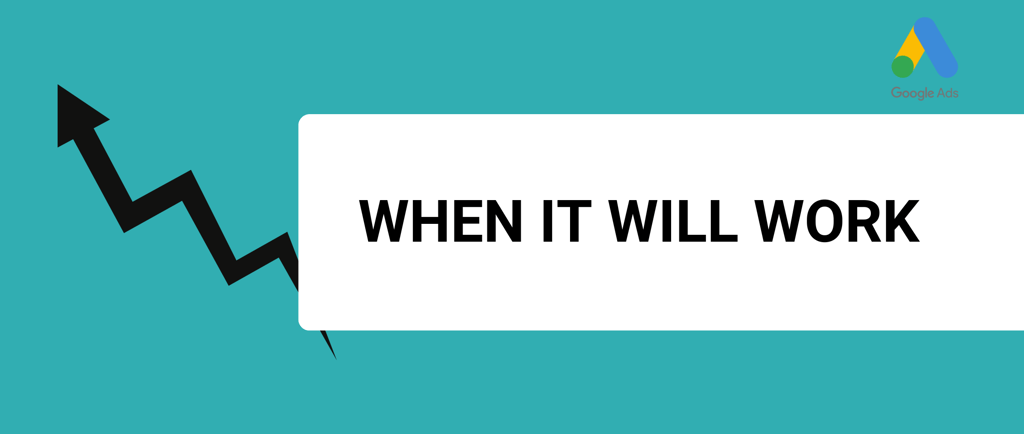When Do Google Ads Start Working: A Complete Guide to Achieving Early Results
Curious when do Google Ads start working? Discover the timeline, strategies, and tips for seeing early results. Learn why consistent ads and patience lead to the best ROI for long-term success.
BASICS & INTRO GUIDES
10/29/20244 min read


Google Ads is a powerful digital advertising tool that enables businesses to reach potential customers actively searching for their products or services. By displaying targeted ads across Google’s vast network, including search and display channels, businesses can drive traffic, generate leads, and increase sales.
However, one of the most common questions among new advertisers is: When do Google Ads start working? Understanding the timeline, the strategies involved, and the factors that influence early performance can help you get the most out of your investment in Google Ads.
When Do Google Ads Start Working?
So, when do Google Ads start working? While every campaign is unique, advertisers can generally expect to see initial engagement—like clicks and impressions—within the first few days. However, meaningful results, such as conversions, may take more time to achieve. This often leads businesses to wonder exactly when Google Ads start working to drive conversions and ROI.
It’s crucial to remember that Google Ads operates based on various factors, including the quality and relevance of your ads, your budget, and your targeting parameters. Some campaigns may see conversions within the first three weeks, while others may require more time for consistent optimization and refinement. Knowing when Google Ads start working for your goals will help you set realistic expectations and make informed decisions about your campaign’s progress.
The Google Ads Timeline: What to Expect in the First 90 Days
Your first 90 days with Google Ads can be split into several distinct phases. Here’s what you can expect during each stage:
Days 1–7: Initial Setup and Launch
During the first week, focus on configuring your campaign settings, defining your target audience, and selecting the right keywords. This phase is about getting your ads up and running rather than seeing immediate results. Though early results might not be immediately visible, it’s a crucial period to begin the data collection process so that Google Ads can start working effectively for your goals.Weeks 2–3: Analyzing Early Data and Optimizing
Once your ads have been live for a couple of weeks, you’ll start receiving preliminary data on impressions, clicks, and initial engagement metrics. This is the perfect time to begin identifying trends and assessing which keywords or ad placements are performing best. Monitoring when Google Ads start working for these initial metrics is a good indicator of progress.Weeks 4–6: Implementing Strategic Adjustments
With initial data in hand, it’s time to make strategic changes. You might adjust bids, add or remove keywords, refine your ad copy, or experiment with new ad formats. This phase is critical to help your ads start resonating more effectively with your target audience.Days 45–90: Reaching Optimal Performance Levels
By this stage, your campaign has gathered sufficient data to allow for more precise targeting and bid management. With consistent monitoring and adjustments, many advertisers begin to see tangible results, including increased conversions, during this period. This is the point when Google Ads start working at their most optimized level.
Three Months: The Key Milestone for Google Ads Success
In most Google Ads campaigns, three months is a significant milestone—the point at which you begin to see the true potential of your ad efforts. By the end of this period, your campaign has typically gathered enough data to provide meaningful insights into what’s working and what needs improvement. This three-month mark is also a strategic time to unlock even greater potential by expanding to more advanced features. For example, introducing Performance Max campaigns at this stage can enhance results by allowing Google’s AI to optimize across all Google channels, including YouTube, Search, Display, and Maps, based on conversion data from the past three months.
Performance Max campaigns are designed to leverage the rich data collected during the first few months, helping you achieve more conversions by targeting high-intent audiences through multiple touchpoints. With consistent data from the initial three months, Performance Max uses machine learning to find audiences with a higher likelihood of converting, optimizing bids and placements automatically to drive the best possible performance.
Google Ads as a Marathon, Not a Sprint
Google Ads is a marathon, not a sprint. This mindset is crucial for advertisers hoping for sustainable, profitable outcomes. While it can be exciting to launch a campaign and expect fast results, Google Ads requires patience and persistence. In many cases, it can take over three weeks to see the first meaningful conversion. On the other hand some accounts see conversions rolling way during the same day.
This time allows your campaign to gather enough data to perform at its best and helps Google’s machine learning optimize for your audience and goals. Nonetheless, Google Ads has the potential to transform your business over time, turning it into a profitable enterprise. With the right approach, you’ll see that your patience will pay off as the campaign builds momentum and reaches its highest performance potential. Understanding when Google Ads start working for different goals will help you set realistic expectations and maximize results.
Importance of Consistently Running Ads for Better Results
Running your Google Ads consistently is key to maximizing results and benefiting from the platform’s learning algorithms. When you maintain a steady ad presence, you’re feeding Google’s algorithms with data on which audiences, keywords, and ad formats work best for your objectives. This consistent flow of data enables Google to refine and optimize your campaign for better targeting, timing, and placements, ultimately improving your return on ad spend.
Additionally, if you’re considering switching to Smart Bidding—an automated bid strategy that helps you achieve specific goals more efficiently—consistent data flow is even more essential. Google recommends at least 30 conversions within the past 30 days to optimize Smart Bidding effectively, ensuring your ads reach audiences most likely to convert.
The Long-Term Value of Google Ads
Over time, Google Ads becomes an invaluable tool for scaling your business and reaching new customers. By setting realistic expectations, consistently optimizing, and running ads with patience and purpose, businesses can make the most of their investment in Google Ads.
Though early results may be modest, a well-executed Google Ads campaign has the power to build brand visibility, drive conversions, and ultimately, fuel business growth. Knowing when Google Ads start working and how to leverage the data effectively will ensure long-term success for your business.
CONTACTS
incomewithdigitalmarketing@gmail.com
BOOK WITH US
SERVICES
Google Ads Assisstance
Google Analytics Setup
Google My Business Management
